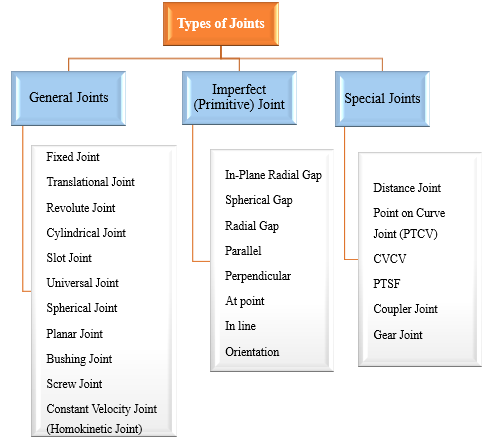What is Joint in FEA ?
In general, when we thought of the types of joints the most probable answer came across are; joints in our human bodies (such as ball joint, knee joints, etc.) & joints used in structural work (such as pivot, revolute joint, etc.). FEA is used to solve complex real life problems and in order to define the connection or junction between various bodies the joints are used in FEA.
A joint is a junction where bodies are joined together based on their relative motion with each other. Joints define how parts or bodies such as rigid bodies, flexible bodies or point masses are attached to one another and how they can move relative to each other. There are different types of joint based on their relative motion with each other (fixed or free rotational or translational movement). Users can specify different joints properties such stiffness, damping, friction, motion initial condition, etc. to replicate the actual joint conditions. These joint types can also be used to define the remote boundary conditions by defining remote attachment.
Types of Joints:
The joints vary based on their relative motion with each other. Figure 1 shows most widely used joint types in FEA.

- General Joints:
- Fixed Joint
- Translational Joint
- Revolute Joint
- Cylindrical Joint
- Slot Joint
- Universal Joint
- Spherical Joint
- Planar Joint
- Bushing Joint
- Screw Joint
- Constant Velocity Joint (Homokinetic Joint)
- Imperfect (Primitive) Joint Types
- In-Plane Radial Gap
- Spherical Gap
- Radial Gap
- Parallel
- Perpendicular
- At point
- In line
- Orientation
- Special Joints
- Distance Joint
- Point on Curve Joint (PTCV)
- CVCV
- PTSF
- Coupler Joint
- Gear Joint
You will find most of the above mentioned joints in all commercial FEA software’s. Joints names slightly vary but their characteristics and property definition might be the same.
We will discuss major joints types with practical examples in our blogpost.
